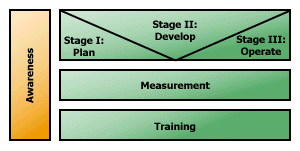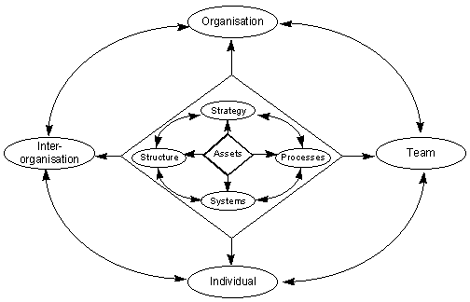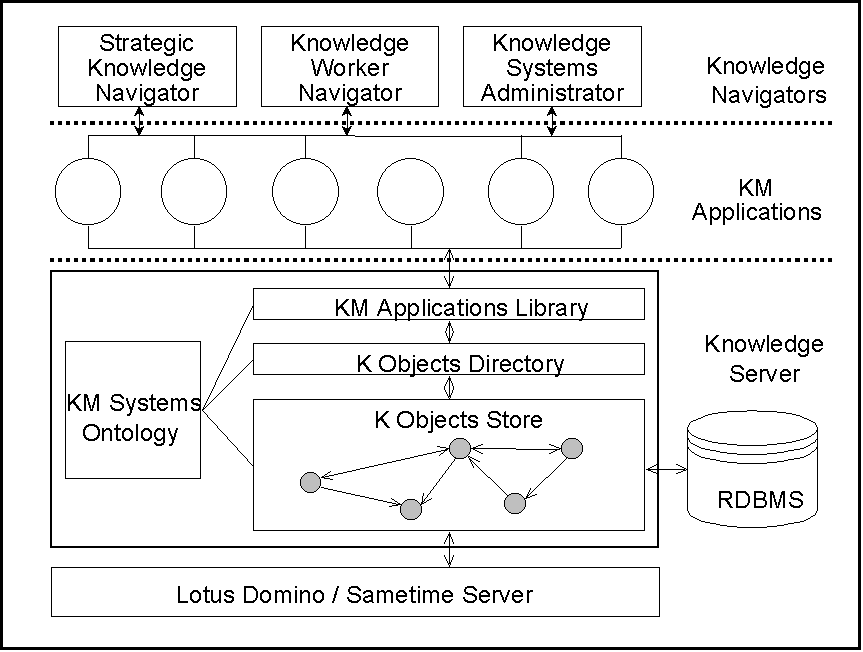October 1998–March 2000

#1. Project description
The result of the Know-Net project is a holistic Knowledge Management solution, whichincludes three components.
The first component is a conceptual framework that can be used by managers as a roadmap for ensuring integrity of the Knowledge Management effort.
The second component is a modular method that helps organisations define and document their knowledge management strategy, audit and design business processes that enhance and facilitate corporate learning, establish related organisational roles, facilitate knowledge sharing between people in the organisation, and explicitly measure and evaluate the quality and business value of the organisation’s intellectual capital.
The third component is an intranet-based tool that supports the collection and categorisation of internal and external information, the re-use of stored knowledge using flexible and customisable Knowledge Navigators, advanced search – both keyword-based as well as concept-based, and collaboration facilities via on-line workspaces that allow knowledge workers to work together from different locations.
##Elements of the Know-Net Framework
The Know-Net framework represents the following types of elements:
- the business-related Knowledge Assets of the company. We examine three types of knowledge assets: human assets; structural assets; and market assets.
- the Knowledge Networking Levels, whose interdependencies facilitate the leveraging and flow of knowledge assets. Know-Net identifies four levels of knowledge networking: individual level; team level; organisational level; and inter-organisational level.
- the Knowledge Management Infrastructure which should be established within a company, in order to facilitate knowledge leveraging initiatives. We examine four components of the Knowledge Management Infrastructure: strategy; structure; processes; and systems.
##Elements of the Know-Net Method
The Know-Net method consists of six (6) stages as follows:

- “Awareness” about the benefits of knowledge management and its relationships to strategic as well as operational and day-to-day issues in the corporate environment. The Know-Net framework, as presented in the previous chapter, may be used for creating awareness about the specific issues of KM.
- “Stage I: Plan” refers to the Knowledge Management Strategic Planning phase, during which an organisation determines the vision and readiness for a knowledge management initiative and the scope and feasibility of the project.
- “Stage II: Develop” is the phase in which an organisation transforms itself to a knowledge intensive company based on the company-specific KM value proposition derived in Stage I. Here, the holistic KM solution (that covers processes, people and technology) is iteratively developed, tested and reviewed.
- “Stage III: Operate” is the phase in which an organisation rolls-out a company-wide implementation plan with a holistic approach to KM. This stage concerns the actual day-to-day operation of a KM environment, so no specific methodology is provided for it; change management and project management methods may used for that effect.
- “Measurement” provides consistent support for measuring the creation, sharing and use of knowledge assets within the company, using the Know-Net Knowledge Asset Measurement Process (KAMP).
- “Training” of both the knowledge workers to the new processes and technologies as well as of the staff to take up new knowledge-related roles (e.g. Chief Knowledge Officers, knowledge analysts).

##Elements of the Know-Net System
The Know-Net system is built around a knowledge asset-centric approach that is aunique fusion of the process-centered and content-centered perspectives. Thecommon denominator of the content-centric and the process-centric approach toKM is the Knowledge Object, for instance a lesson learned document, a bestpractice template, a documented new product idea, an FAQ answer, a contributionto an online discussion in a thematic network, etc. Knowledge Objects are the“glue” between content-centric (they “are” content items) and process-centric(they are created, discussed, shared, consolidated, used, etc. in KM processes)approach, both in Know-Net the conceptual architecture and in the Know-Net. Since a Knowledge Object is created andmaintained by a KM process (for instance, a lesson learned process attached toan operational business process), the Know-Net system provides support forinstalling and running KM processes. Technically, this is done in a twofold manner:
First, we provide easy access to synchronous, powerful communication and collaboration channels, like real-time chats or application sharing. This fosters knowledge creation and tacit knowledge sharing within knowledge networks. In Know-Net, this is technically realized by integrating the Lotus Domino Sametime technology.
Second, we integrated a number of KM processes, realized by Lotus Domino applications. These applications incorporate the basic KM processes into several basic business processes required in daily business.
Since a Knowledge Object is usedto search, organize and disseminate knowledge content, we coupled with the KMprocesses (which produce knowledge objects as their media for persistentstorage of information) an ontology-based, content-oriented searching andindexing machinery. This is realized as a JAVA application running aside theLotus Domino software.
The Know-Net system has three fundamental layers andassociated components, as listed below.

The Know-Net Knowledge Navigators provide role-specific views and perspectives on the Know-Netsystem services and give a unique point of access to all processes andapplications relevant for a given KM role. In particular:
- The Strategic Knowledge Navigator (SKN) shows the Know-Net system from a Chief Knowledge Officer’s (CKO) perspective, or Director of Knowledge Management, and/or a KM Consultant point of view.
- The Knowledge Worker Navigator (KWN) takes the perspective of the individual knowledge worker doing his projects, being involved in operational business processes, who shall be integrated in the corporate wide knowledge network.
- The Knowledge Systems Administrator Navigator (KSAN) offers the system administration tools.
- The Know-Net KM Applications support typical business processes and encapsulate KMprocesses that create and manipulate Knowledge Objects. Essentially, these areLotus Domino (of course, also non-Lotus applications would be possible,technically) applications that realize some KM process or incorporate the basicKM learning process into operational business processes.
The Know-Net KnowledgeServer is the one place, accessed by the Knowledge Navigators from anywhere, which realizes persistent storage for the applications provided (KM Applications Library), which holdsthe basic structures and schemata underlying the other applications andservices (Knowledge Objects Directory, KMSystems Ontology), and which stores the concrete instances of theseschemata and mass data to be dealt with. The created Knowledge Objects are keptin a relational database – RDBMS.
##Use of the Know-Net System
The Know-Net solution has been tested and used by the following corporations.
The Credit Risk Valuation Department of UBS, a leading universal and asset management bank
NAI GOOCH WEBSTER, a firm of Chartered Surveyors and Commercial Property Agents.
PLANET, a management consultancy company.
2. Related publications
- Mentzas, G.N., D. Apostolou, R.Young and A. Abecker (2002) Knowledge Asset Networking: a Holistic Approach for Leveraging CorporateKnowledge, Springer-Verlag.
- Mentzas, G. N., D. Apostolou(2003) LeveragingKnowledge Assets in Firms of the Digital Era, in G. Doukidis, N. Mylonopoulosand N. Pouloudi (Eds) “Information Society or Information Economy? A combinedperspective on the digital era”, Chapter XVII, Idea Group Publishing, pp.289-311.
- Apostolou, D and Mentzas, G. N.(2002) “Experiencesfrom knowledge management implementations in companies of the software sector”,Business and Process Management Journal, Vol. 9 No. 3, 2003, pp. 354-381.
- Mentzas, G.N., D. Apostolou, R.Young and A. Abecker (2000) Knowledge Networking: A Holistic Approach, Method and Tool forLeveraging Corporate Knowledge, Journal of Knowledge Management, Volume 5, Number 1, 2001,pp.94-106.
- Apostolou, D. and G.N. Mentzas(1999) ManagingCorporate Knowledge: A Comparative Analysis of Experiences: Part II, Knowledge andProcess Management, December 1999, Vol. 6, No. 4, pp. 238-254.
- Apostolou, D. and G.N. Mentzas(1999) ManagingCorporate Knowledge: A Comparative Analysis of Experiences: Part I, Knowledge andProcess Management, December 1999, Vol. 6, No. 3, pp. 127-138.
- Mentzas, G.N., D. Apostolou, andA. Abecker (2001) ManagingKnowledge as a Strategic Resource for Electronic Government, in M. Wimmer (ed) Knowledge Management inElectronic Government, KMGov-2001, pp. 84-95, 2nd InternationalWorkshop organized by IFIP WG 8.3, May 22-24, 2001, Sienna, Italy.
- Apostolou, D., G.N. Mentzas, R.Young and A. Abecker (2000) Consolidating the Product Versus Process Approaches in KnowledgeManagement:, presented in the PAKeM 2000, Practical Applications of KnowledgeManagement Conference, April 12-14, Manchester, UK.
- Mentzas, G.N. and D. Apostolou(1998) Managing Corporate Knowledge: A Comparative Analysis of Experiences inConsulting Firms in Reimer, U. (ed) Proceedings of the 2nd International Conference on Practical Aspects ofKnowledge Management, PAKM 98, Basel, Switzerland, 29-30 October1998.
- Apostolou, D. and G. N. Mentzas(1998) Towards a Holistic Knowledge Leveraging Infrastructure: The KnowNetApproach, in Reimer, U. (ed) Proceedings of the 2nd International Conference on Practical Aspects ofKnowledge Management, PAKM 98, Basel, Switzerland,29-30 October 1998.
-
Project website

